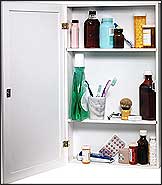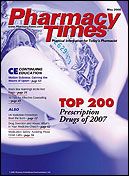Publication
Article
Pharmacy Times
Drug Diversion and Abuse: Medicine Chests Pose Problems
Author(s):
With prescription drugs becoming the new "gateway" substances for youth in the United States, pharmacists must educate patients about the risk of prescription drug abuse when they do not properly dispose of their medications.

John Burke, commander of the Warren County, Ohio, drug task force and retired commander of the Cincinnati Police Pharmaceutical Diversion Squad, is a 40-year veteran of law enforcement. Cmdr Burke also is the current president of the National Association of Drug Diversion Investigators. For information, he can be reached by e-mail at [email protected], via the Web site www.rxdiversion.com, or by phone at 513-336-0070.
The director of the Office of National Drug Control Policy, also known as the US ?drug czar,? John Walters, recently spoke in Cincinnati, Ohio, at their Drug and Poison Information Center. In his talk, he cited the studies that showed that teen use of marijuana and heroin has dropped in the past few years, while prescription drug abuse has risen.
During his speech, he indicated that prescription drugs are becoming the new ?gateway? substances for our youth in the United States. Calls to Cincinnati?s Drug and Poison Information Center on pharmaceuticals have increased by almost 300% in the past few years. Walters went on to say that prescription drugs are free for our youth and can be found commonly in our nation?s medicine chests. These are the cabinets of the teenager?s parents, family, or friends, and they contain some of the most abused drugs in America.
At a recent conference, I asked the attendees how many of them had prescription medication in their homes that they were no longer using but had not yet destroyed. I estimated that about 70% of the participants, all of whom were involved in some way or another with addressing the prescription drug problem, raised their hands.
Americans have controlled substances prescribed to them for a variety of issues with acute pain. Painkillers are prescribed following dental work and surgery and for aches and pains and other medical problems that last for short periods of time but require pain medication for the first few days to keep the patient comfortable. A significant percentage of these medications are never totally consumed by the patient. They are placed in a medicine cabinet, sock drawer, closet, or kitchen cabinet to be brought out and used for recurring pain, for which they were prescribed, or any other aches and pains that the patient may experience that require a strong analgesic. Often that means that these drugs sit for weeks, months, or even years, with the original patient forgetting about the pills that are stored away for safekeeping.

Over the past several decades, this may have been something that was unnoticed by our teens, but not in today?s world. These stashes of potentially addictive substances, which has long been known by drug-dependent workers and others allowed in your home, are now being removed and abused by our youth in record numbers. We can blame the Internet, or the fact that the prescribing of controlled substances has greatly increased over the past decade, but providing public awareness on this issue may work better than most prevention programs have in the past.
The first place to start is educating the patient who receives these medications. Many of them are unknowing and unwilling enablers for prescription drug abuse, especially with teens. We cannot assume that the person who receives a controlled substance prescription knows the potential value, both in dollars and in abuse, of the prescription. It is very possible that the patient does not understand the potential problem, or, in today?s busy world, he or she just has not given it any thought.
I think that the average person is more than willing to take the steps to prevent this problem by securing medication in a locked container while it is being used or properly discarding it when he or she is finished with whatever pills are remaining. Next month, we can talk about some methods that may work to reduce this problem, but all of us must partner up and get the word out.

Newsletter
Stay informed on drug updates, treatment guidelines, and pharmacy practice trends—subscribe to Pharmacy Times for weekly clinical insights.






